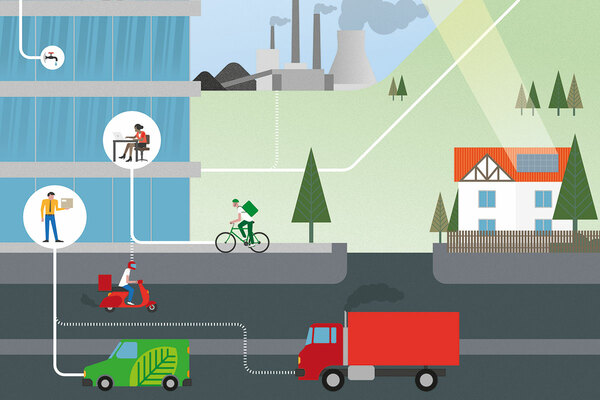You are viewing 1 of your 1 free articles
The climate crisis is the sector’s greatest challenge, but we can rise to it
As discourse around the climate crisis intensifies, the sector has plenty to do to play its part. Tony Stacey explains what can and must be done
I know what you’re thinking: “Oh no, Tony’s going to write about how we all need to wake up to the climate crisis again. I can’t be doing with reading that.” I am with you. I can’t be doing with writing another blog like that either.
Nor do I need to. There has been a remarkable, Greta Thunberg-shaped transformation in the strategic thinking of the sector over the past three months or so in relation to the climate crisis.
It’s now the top priority for PlaceShapers, the National Housing Federation, the Northern Housing Consortium, the Chartered Institute of Housing and just about every housing organisation I talk to. Job done.
The easy bit first: new build. Surely all of us are planning to get to zero carbon pretty quickly? The embedded carbon in building any new home needs to be factored in, but we will get there, won’t we?
The difficult part is decarbonising the existing stock. In principle, scoping what’s to be done is straightforward. There are three dimensions to it: financing, technologies and supply chains, and tenants. The sector is making progress on the first two, but is barely out of the starting blocks for the third.
Let’s start with that one. South Yorkshire Housing Association has retrofitted 15% of our older stock with photovoltaics.
We did this when the feed-in tariff scheme helped us to make this stack up for us and our customers. There was only upside for our tenants: free electricity and little disruption. Yet half of our tenants turned it down when we first approached them. By engaging them in a more detailed conversation, we pushed the acceptance rate up to 80%.
Now, imagine us knocking on those same tenants’ doors to say we want to take out their gas boilers and radiators and replace them with heat pumps and panels? We would have to say: “By the way, your heating costs might rise but you won’t mind will you? We all want to save the polar bears and kangaroos.” Make sure you have your trainers on so you can sprint back to your Tesla.
“There has been a remarkable, Greta Thunberg-shaped transformation in the strategic thinking of the sector over the past three months or so in relation to the climate crisis”
The climate emergency plays very differently in poorer communities.
What do we then do? Do we go to great lengths to persuade but resort to legal action if we fail?
For me, this brings to mind Julia Unwin’s challenge: “Whose homes are they, Tony? They’re not yours.”
On to firmer ground then. How much will it cost and how do we pay for it? Here’s a figure to get started: £100m. That is around what your organisation will need to retrofit 5,000 homes. I have now heard from a number of organisations that are furthest ahead with putting their estimates together and they are in this territory.
Plug that into your business plans and see what happens. The housing associations in the South fear for their development programmes, believing that they will come to a halt or be severely cut back. For many in the North it’s an existential threat. A huge generalisation and, yes, I know about regional differences, but it will do for now.
"I have no doubt we can rise to it. We will co-design brilliant solutions with our tenants, make mistakes, learn from them and lead the way in taking the country to housing net zero"
Then what about technologies and supply chains? Tricky, but we will get there. Markets will respond once housing organisations collaborate and develop preferred solutions. There is, of course, concern that we might adopt the wrong technologies. Hydrogen anyone? But we can adopt a “minimal regret” strategy, to use Ofgem’s phrase. If we get it wrong, it might be Betamax, but at least we can make it adaptable Betamax.
I have been a chief executive for 34 years. Climate change is by far the greatest challenge the sector has ever faced.
I have no doubt we can rise to it. We will co-design brilliant solutions with our tenants, make mistakes, learn from them and lead the way in taking the country to housing net zero.
It would be an awful lot easier if the government would lead this work by providing vision and funding to help us get there.
The regulator can help, too. But if they can’t or won’t, I have just one request: don’t block the road for those people and organisations that will lead the way.
Tony Stacey, chief executive, South Yorkshire Housing Association













